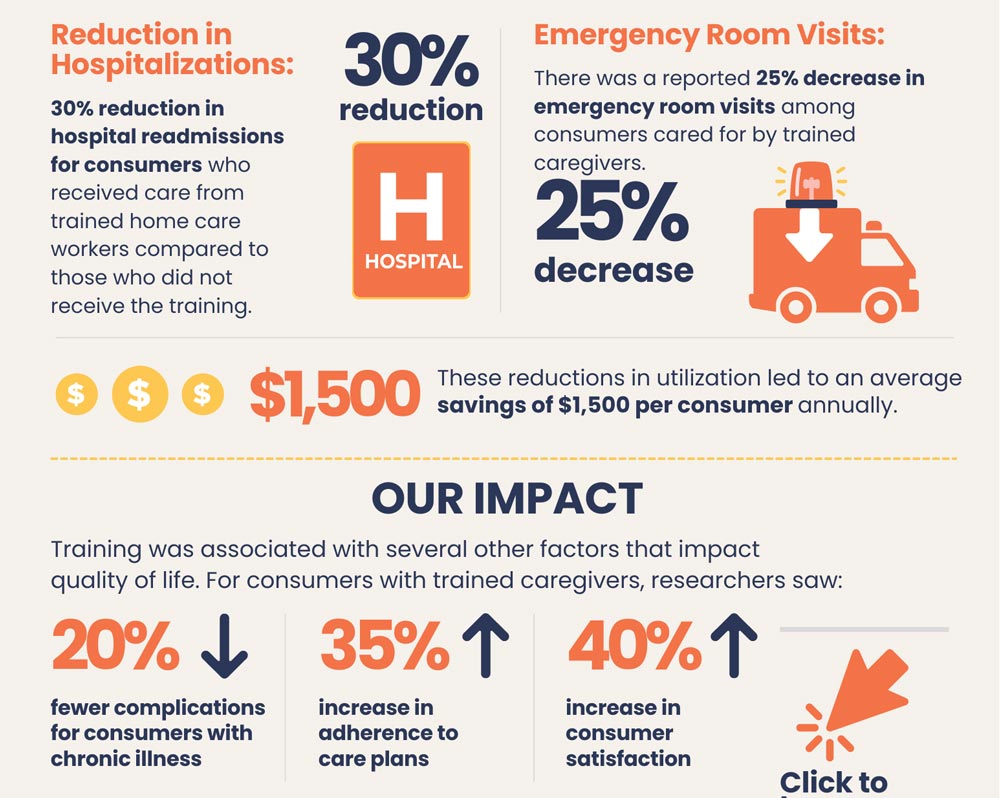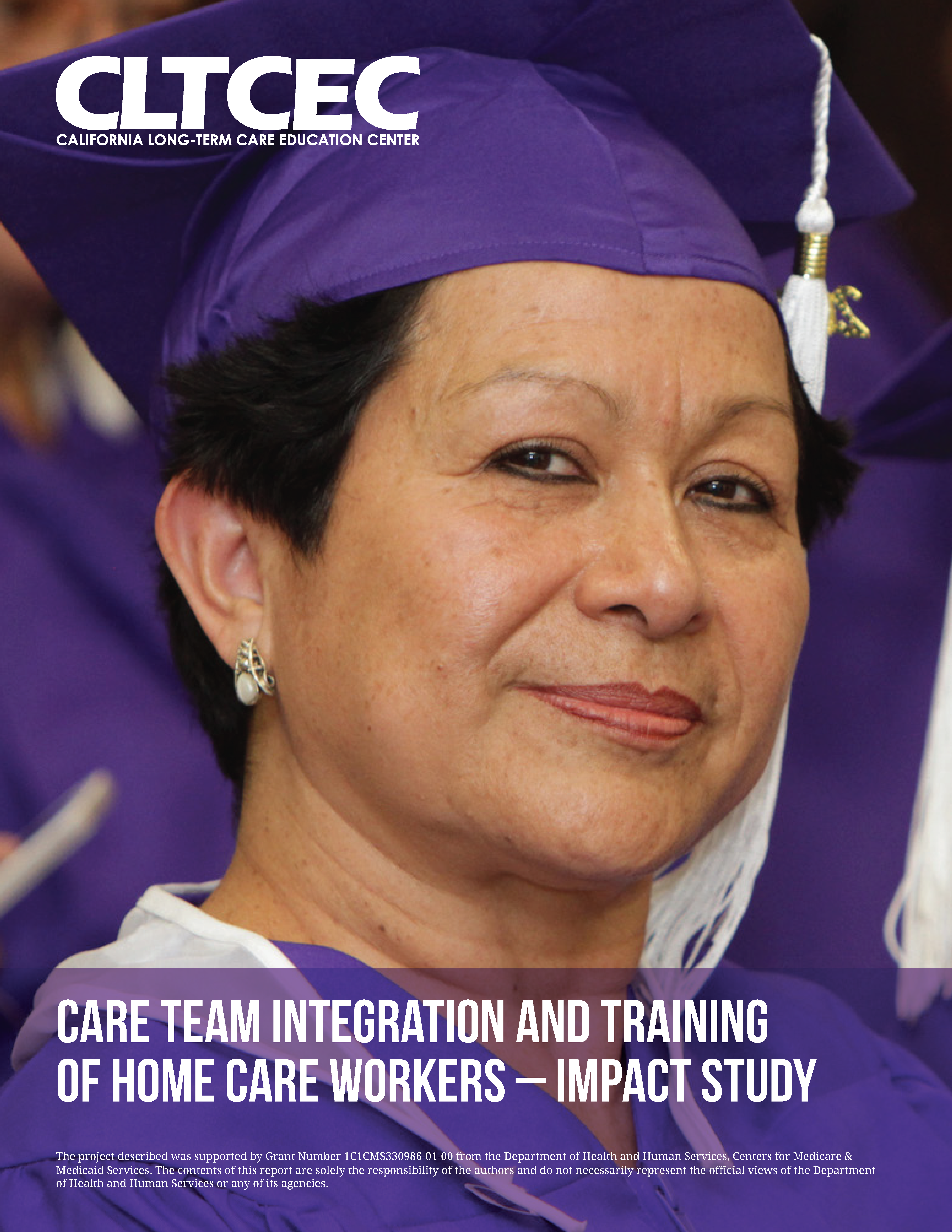When Felipe Murillo suddenly became his mother’s full-time caregiver, everything seemed like an emergency and they made a lot of ER visits.
“Initially, after my mom came out of the hospital, I would get scared about everything that would come after that, like when she started coughing,” he said. Felipe’s initial reaction anytime his mother was experiencing anything out of the ordinary was to take her to the emergency room (ER).
However, after completing CCA’s 10-week caregiver training program, Felipe can now distinguish between a situation that requires an ER visit and those that can be handled via an urgent care facility. Through this training I am “… learning about the differences. [I learned that] maybe she doesn’t really need to go to the ER every time, maybe I could just take her to urgent care,” he said.
A new report from L.A. Care Health Plan shows that CCA’s IHSS+ training program reduces consumer emergency room visits and inpatient utilization. L.A. Care is CCA’s partner in delivering quality, evidence-based training to hundreds of IHSS providers whose consumers are L.A. Care members.
The utilization study, entitled Evaluation of In-Home Support Services (IHSS) Training on Health Care Outcomes and authored by Matthew Pirritano, PhD,says that.. among the consumers whose caregivers participated in the training, “there was a statistically significant decrease in ER utilization over time.” This trend was reported as decreasing prior to the end of the training and subsequently continued to decrease after graduation. Similarly, “inpatient utilization went from relatively flat prior to graduation to decreasing.”
Providing caregivers with high-quality training reduces the need for external medical care in certain situations. Caregiver Jennifer Ballesteros, who completed the multi-week training program, said, “The training is helpful to navigate the medical part of what I do for my mother.”
The material taught in the course may also be linked to the decrease in consumer ER visits and inpatient utilization. As part of the curriculum, students are instructed on how to distinguish between when their consumers need to visit urgent care and when they need emergency care.
The report concluded that “there is a relationship between the training and a change in utilization.” These results are in line with the results of other prior evaluations of similar training programs. “This pre-post design which aggregated results across multiple classes bolsters the argument that the training might be causally related to the changes in utilization.”
The sample population for the study was drawn from cohorts who completed the training between September 26, 2017 and August 6, 2021. The participants were only included in the analysis if the consumers they were caring for were continuously enrolled in L.A. Care within a year prior to and after graduation from the program.
Related Reading: IHSS Providers Are a Caregiving Lifeline for Californians




















